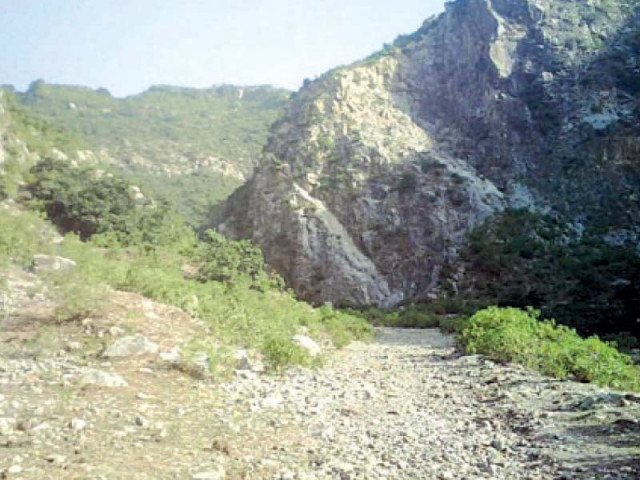Saving trees: Policy on deforestation still a distant dream
No official record on deforestation rate in country after 2004.

No official record on deforestation rate in country after 2004.
A 2004 study conducted by the Pakistan Forest Institute (PFI) had said deforestation rate in the country was 27,000 hectares per year. However, the United Nations Food and Agriculture Organisation (FAO)’s state of forest report in 2010 shows a massive increase to 41,000 hectares deforestation per year in Pakistan.
According to FAO, Pakistan has the highest rate of deforestation in the world. The reasons are: increasing gap between demand and supply of wood, dependence of local populations on forest for livelihood, no mechanism to give incentives or compensations to forest protectors besides climate change factors including drought, floods and fires.
According to the latest figures released by the of Ministry of Climate Change forest wing, the country has 5.02 per cent of its total area under tree cover including trees in private farmlands.
Besides, there is also a lack of official data on forests in the country. There are only two official studies conducted by the federal government office of the inspector general of forests. The first study was conducted in 1992 under forestry sector master plan (FSMP) and the second study was carried out under a forestry sector project through Pakistan Forestry Institute Peshawar in 2004.
According to FSMP, the forest area of the country was 4.8 per cent of the total area, while the 2004 study conducted by PFI revealed deforestation rate was 27,000 hectares per year.
“The forestry was already a devolved subject before the 18th Amendment, because it was never included in the concurrent list,” said an official of forest wing.
The office of Inspector General (IG) of Forest in the ministry of Food and Agriculture had been looking after the forestry affairs before the 18th Amendment in 2010, which devolved the subject of environment to provinces. Officials say the provincial governments too have not taken any concrete steps as yet.
Later, the IG Forest office was shifted to environment ministry. The main function of the forestry wing in the environment ministry was coordination between the provinces and coordination with international agencies in making policies besides research and education.
“The ministry of environment had never infringed upon provincial autonomy, as the forestry had been treated as a provincial subject since 1935, in united India,” the official said adding that in 1976, the Indian government included forestry into the concurrent list, and owing to this decision India made tremendous progress in increasing its forest cover from 19 per cent to 21 per cent.
He went on to say that after including forest in the concurrent list, India promulgated Federal Forest Conservation Act 1980, according to which any person or agency acquiring forest land has to provide funds for compensatory afforestation. He said that for this purpose, Indian states developed a land bank and the fund generated were placed under the compensatory aforestation fund management and planning authority (CAMPA).
Studies, he said, revealed that after enforcement of the act, the conversion of forest land for non forest purposes declined to 15,500 hectares in 2010 from 150,000 hectare prior to 1976. Furthermore, the Indian Government took another revolutionary step by establishing the Forest Survey of India (FSI) to undertake independent surveys of forest cover and deforestation, he explained.
Another official at the Ministry of Climate Change forest wing said the ministry supported the provinces through mega projects worth Rs12 billion from 2007 to 2013 to increase the forest cover by one per cent till 2015.
“But after the 18th Amendment, it does not seem possible. Reducing Emissions from Deforestation and Forest Degradation (REDD+) is an opportunity to earn approximately $400 million to $1 billion per year by conserving existing forests,” the official said and stressed that there was a need to engage the community for raising awareness regarding increasing the area of forest cover.
“No forest policy has ever been approved in Pakistan, the latest one was presented before the cabinet in April 2011 which was resisted by provinces on the plea that it was a provincial subject after 18th Amendment and the premier decided to refer it to the Council for Common Interest (CCI),” The IG forest Syed Mehmood Nasir told The Express Tribune and said that REDD was an opportunity for saving Pakistani forests.
However, some foresters are of the views that the steps taken by the provinces of dealing directly with foreign investors, bypassing the federal government have raised fears that foreign investment in REDD may not come if mishandled. They said that there was a need to work together for the case of forests.
Published in The Express Tribune, May 24th, 2015.



















COMMENTS
Comments are moderated and generally will be posted if they are on-topic and not abusive.
For more information, please see our Comments FAQ